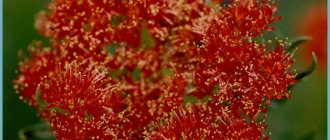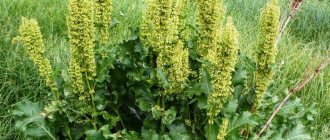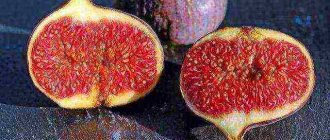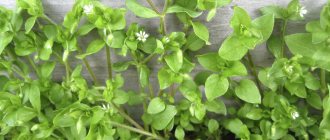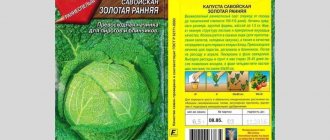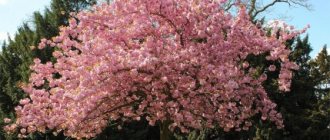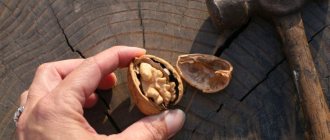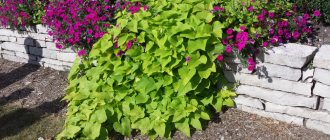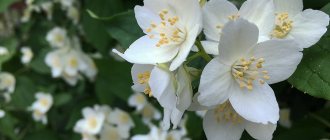The inhabitants of the European part of the continent have their own golden root. Not ginseng, but a plant closely related to its action, it has long been used to treat neurological diseases and provide general support to the body. This is Rhodiola rosea, the medicinal properties and contraindications of which have been known for several centuries and are taken into account when used in official and folk medicine.
What is Rhodiola rosea (or golden root)
Rhodíola rósea (Rhodiola rosea) is a herbaceous plant reaching a height of no more than half a meter. Its roots are massive and thick. The stem is erect. The leaves are dark green in color and elliptical in shape. The flowers are unisexual, yellow in color, collected in corymbose inflorescences. Belongs to the Crassulaceae family. The flowering period is June-August. As a result, leaflet fruits of red or yellow-green color are formed.
Rhodiola flowers
Preparation and storage of golden root
The root of the plant is used for preparation. Using garden tools (forks, shovels), dig up the rhizome. This must be done in September, when Rhodiola has faded and the seeds are well ripened. The dug up rhizome must be shaken off the soil and washed to remove unnecessary impurities. The clean workpiece must be crushed into uniform pieces, their size should not be less than 5 cm. The raw materials are laid out in a thin layer on the surface and dried in the open air, under a canopy. After which you can dry it in a dryer at a temperature of no more than 50°C. If all harvesting rules are followed, the root should have a white or slightly pinkish tint at the break.
Important! Rhizomes whose plants are at least 3 years old are suitable for collection. During this time, Rhodiola rosea will accumulate all the nutrients that restore health.
The prepared raw materials must be stored in a dark, well-ventilated place. If all preparation and storage rules are followed, Rhodiola retains all beneficial substances for at least 3 years.
Geography of distribution and homeland of growth
Altai is considered the birthplace of Rhodiola rosea. However, it is also found in other countries and regions:
- China;
- Bulgaria;
- Mongolia;
- throughout Russia;
- in Eastern Kazakhstan;
- Siberia.
The plant is widespread on rocky soils, as well as in the tundra. Its habitats include:
- rocky terrain;
- banks of mountain rivers;
- banks of streams.
Rhodiola rosea in nature
Rhodiola rosea: varieties and varieties
Scientists have described about 60 species of Rhodiola rosea. The most popular varieties of radiola:
- Kirillova. Found in Tibet, Tien Shan, Altai, and North-West China. The height of the bush with a tuberous rhizome and dark green pointed leaves is from 30 to 40 cm. It blooms on the 10th of May and remains decorative for about a month.
Kirillova Rhodiola
- Lineifolia. Homeland - mountains and forest meadows of Central Asia. It is a dioecious perennial plant with erect stems up to 0.3 m high.
Lineifolia rhodiola
- Varied-toothed. Prefers rocky soils of the Himalayas, Tien Shan, Tibet, Altai, Pamir. The leaves of the plant have a bluish tint and a triangular-ovate shape; the roots are almost on the surface.
Rhodiola heterodentata
- Golden root – a type of Rhodiola used medicinally. Habitat: Far East and Eastern Siberia, Altai and Arctic regions of Russia, Scandinavia.
Golden root
Rhodiola rosea: beneficial properties and contraindications
Glycosides have a calming effect and have a beneficial effect on the circulatory system and heart. Due to flavonoids, blood pressure in the body is stabilized and the elasticity of blood vessels increases. They are indispensable in the processes of bile production and the work of the adrenal glands.
Golden root, the medicinal properties and contraindications of which have already been well studied, due to the presence of tannins , can change the structure of the protein. But due to anthraquinones, the immune system is strengthened, but they also have a strong laxative effect.
Essential oils promote rapid wound healing and have antiseptic properties. Coumarins are very important elements. They are widely used in the fight against cancer and the coxsackie virus.
Due to the sterols contained in the plant, cholesterol levels in the body are reduced and the cardiovascular system is strengthened. Alkaloids help combat pain, spasms, and even help stop bleeding.
Another name for the plant is “Golden Root”
Useful properties of rosehip and contraindications for its use. Read the special publication on our portal about rose hips. We will tell you in detail about the beneficial properties of the plant, its use and contraindications, as well as about pharmaceutical preparations based on it.
What is contained in golden root?
The golden root has passed
laboratory tests, as a result of which they revealed the excellent adaptogenic properties of this plant, which is not inferior to Eleutherococcus. Not surprising, because its root contains phenolic alcohols, flavonoids and glycosides.
Due to the beneficial properties of the plant, it can be used not only to treat diseases, but also to prevent them.
Thanks to tests, the toxic properties of this plant were revealed when the dosage was exceeded. For example, when the dose was increased, cats experienced a sharp drop in blood pressure to critical levels. That is why, before you start taking golden root, it is better to clarify the dosage with your doctor.
Uses of Rhodiola rosea
This plant has a very wide range of applications. Rhodiola rosea, the medicinal properties and contraindications of which continue to be studied even today, is a true storehouse of useful substances. Thanks to this, it is used not only in medicine, but also in other areas of human activity.
In medicine
Naturally, first of all, a medicinal plant with the set of components listed above has found application specifically for medical purposes. Golden root is effective in combating such ailments as:
- disorders of the central nervous system;
- blurred vision;
- hearing diseases;
- allergic reactions;
- heart disease;
- blood vessel diseases;
- hypotension;
- pulmonary tuberculosis;
- vegetative-vascular dystonia;
- chronic fatigue;
- cold;
- impotence;
- nicotine addiction;
- stomach diseases;
- intestinal diseases;
- scurvy;
- memory problems and many others.
This list is constantly being updated as new properties of the golden root continue to be discovered.
Rhodiola rosea extract: application in cosmetology
Golden root extract, obtained by vacuum, has a lot of valuable properties that are widely used in cosmetology, namely:
- stimulating properties;
- anti-stress;
- anti-inflammatory;
- adaptogenic effect.
Golden root extract has become an integral component of anti-aging cosmetics. It has the properties of skin rejuvenation and smoothing out fine wrinkles. This remedy is also effective in the fight against dermatitis and acne.
Rhodiola cream
In sports
One of the non-standard uses of Rhodiola rosea is its use by athletes. This drug is non-steroidal, but can significantly affect performance by improving its performance. The drug also significantly accelerates recovery processes.
When studying the properties of the plant for athletes, the following are recognized as the most valuable:
- increased endurance;
- rapid recovery after serious stress;
- anabolic effect.
Research in this area continues to be carried out today. No side effects were found.
Rhodiola Dietary Supplement
Rhodiola rosea: combination with other plants
Attention!
In landscape design, golden root is combined with crops that, like it, do not experience an increased need for abundant watering, otherwise the roots will begin to rot. When using radiola rosea as a medicinal plant, it is combined with raspberry, strawberry, currant, blackberry leaves, as well as with such medicinal herbs as thyme, bloodroot, and St. John's wort.
By growing radiola rosea, you will preserve this rare plant for posterity, provide yourself with valuable medicinal raw materials, and the landscape design of your site will only benefit from this.
Forms of use of Rhodiola rosea
Correct use of the drug is very important. In particular, the form of release is also important to achieve a positive result. Each of them has its own characteristics.
Root
Rhodiola rhizomes have a lot of healing properties. They are harvested in the summer (harvesting occurs around July or August). The roots are dug up and washed. After this, rotten and damaged parts are removed from them. Next, the resulting raw materials are cut into small pieces no larger than 10 cm in size, and then dried at a temperature of 50 degrees.
Rhodiola root
Rhodiola rosea tincture
Proper preparation of Rhodiola rosea tincture has its own characteristics. To do this, you need to pour 50 grams of dried and crushed rhizomes with vodka (400 grams). The resulting mixture should be infused for two weeks in a dark place. Every couple of days, shake the container a little.
Herbal tinctures
Infusion
Despite their similarity, infusion and tincture differ both in methods of preparation and in use. Rhodiola infusion is recommended to be taken in case of frequent colds, as well as diseases of the cardiovascular system, nerves and gastrointestinal tract. It is prepared as follows:
Based on 15 grams of crushed roots, take 250 grams of boiling water. The mixture is infused for 4 hours, then filtered. It is recommended to consume the resulting infusion three times a day, 100 milliliters.
Herbal infusion with rhodiola
Decoction
Rhodiola decoctions are indicated primarily for people suffering from cardiovascular diseases. It is the decoction that helps strengthen blood vessels and increase their tone. This remedy is also used for impotence, thyroid dysfunction and abnormal blood sugar levels. Recommended for use for toothache and anemia.
An old folk recipe suggests preparing a decoction in the same proportions as the infusion. Just boil the mixture for 10 minutes, then strain and cool.
Rhodiola decoction
Extract
This dosage form is used primarily for the treatment of asthenia, ARVI or neurasthenia. It also perfectly helps fight fatigue. The liquid extract is recommended to be consumed 5-10 drops three times a day. The course of treatment should not exceed three weeks. In case of psychological disorders, you need to increase the dose to 30-40 drops.
Rhodiola extract
Pills
This dosage form is the most convenient. As a rule, tablets are produced containing 250 mg of golden root extract. They are taken in the first half of the day along with meals, 2 pieces per day. The course of treatment ranges from 10 to 30 days. The next course can be started no earlier than two weeks later.
Rhodiola tablets
Applications of golden root
In recent years, the medicinal properties of golden root have been extensively studied by science. Researcher M.I. Zotova confirmed the stimulating effect when taking an extract prepared in alcohol. The experiment was carried out on animals. Repeated studies by a group of scientists led by S. Ya. Arbuzov showed that the endurance of mice when taking an alcoholic extract of Rhodiola rosea increases two and a half times.
The use of golden root in people exposed to intense physical or mental stress helps to increase the energy activity of the brain and reduces the intensity of oxidative processes in the muscles. A stimulating effect on the functioning of the brain, the thyroid and thymus glands, and the sex glands is achieved, which has been proven experimentally.
Instructions for use of Rhodiola rosea tincture include recommendations for its use as a soothing, refreshing agent, to improve performance. In some sources, the culture is mentioned as an anti-inflammatory and antipyretic agent, due to its antimicrobial and antiviral activity. The astringent properties allow the use of Rhodiola rosea in gynecology as an anti-inflammatory agent for colpitis and vaginitis.
In official medicine
Can be used in the form of purified rhizome extract according to indications. Recommended as an adaptogenic agent for stimulating the immune system and mental activity.
- In healthy people. According to reviews, Rhodiola rosea improves memory, increases concentration, and increases performance.
- In people suffering from neuroses. Reduces excitability and irritability, improves sleep. When taking the drug, patients are not bothered by drowsiness, apathy and fatigue, which manifests themselves when using other sedatives.
- In patients with schizophrenia. Used as a remedy for side effects during treatment with antipsychotic drugs. The frequency of side effects is reduced by two and a half times.
- In patients with hypotension. The extract increases blood pressure, which normalizes the condition, eliminates headaches and weakness.
- In athletes. For people involved in swimming, bodybuilding, athletics and other sports with high intensity loads, it is recommended to use it as an adaptogenic herbal remedy. Under the influence of intense physical activity, metabolic processes in the brain are disrupted. The concentration of glycogen decreases, while the volume of lactic acid increases. This leads to the activation of anaerobic processes with a decrease in the energy reserves of the brain. The result of these processes is fatigue, weakness, and increased fatigue. Taking the tincture normalizes metabolic processes in the brain and improves resistance to stress factors.
How to take golden root depends on the patient's condition.
- With high mental load. 5-10 drops morning and afternoon. You should start taking it two weeks before the upcoming intensive work.
- For schizophrenia. 20-25 drops twice a day in combination with the main treatment of a nervous disorder.
- To increase physical endurance. 15-30 drops two to three times a day thirty minutes before meals.
The dosage of the product should be increased gradually, starting with five drops. Every three to four days, add five drops, observing the patient’s condition. The course is continued for fifteen to twenty days.
In folk medicine
Its use in folk medicine is wider. Vodka tincture is recommended for men as a remedy for impotence. In women it is used for amenorrhea - the absence of menstruation of an unknown nature. They treat conditions of neurasthenia, nervous exhaustion, loss of strength after infectious diseases, and psycho-emotional disorders.
The astringent properties make it possible to use the medicinal plant for stomach and intestinal disorders, and for malaria. The effectiveness of the drug for diabetes, tuberculosis, liver diseases and anemia has not been proven.
Alcohol tincture is used externally as an antiseptic for wound healing, reducing the intensity of inflammatory processes in the throat and oral cavity.
Alcohol tincture
You can prepare an alcohol tincture of Rhodiola rosea at home using the following recipe.
Preparation
- Place the prepared roots in the container. You will need ten grams of dry raw materials or twenty grams of fresh ones.
- Fill with vodka with a volume of one hundred milliliters.
- Leave to brew for eight days.
- Strain.
For internal use, use in a dosage of fifteen to thirty drops. For treatments of the skin and mucous membranes, dilute a teaspoon of tincture in one hundred milliliters of warm water. Use for rinsing, in the form of lotions.
Decoction
The recipe for brewing golden root will be useful for low blood pressure and physical and mental exhaustion. Drink the decoction as tea, morning and afternoon.
Preparation
- Place the dry root in a container, you will need ten grams.
- Fill with hot water with a volume of two hundred milliliters.
- Simmer in a water bath for fifteen minutes.
- Strain.
During the boiling process, the decoction loses some of its healing properties, so herbalists prefer to use an alcohol tincture. But in everyday life, a decoction will be useful for nervous disorders, insomnia, and low blood pressure. Drink half a glass twice a day. Do not use at night, as the product has a stimulating effect.
Contraindications
There are few contraindications for Rhodiola rosea. It is forbidden to use it without consulting a doctor if there are severe symptoms of nervous disorders. It is not recommended to use for hypertension, as a hypertensive crisis is possible.
In case of an overdose, pain in the heart area, insomnia, and increased irritability develop. It is recommended to strictly adhere to the safe dose and administer the medicinal drug with a minimum number of drops.
Golden root (Rhodiola rosea) has a proven stimulating effect on the nervous system. It improves brain function, stimulates muscle activity and performance. Use for nervous disorders can reduce the side effects of basic drugs. In folk medicine it can be used to reduce the severity of stress, support the body under high stress, and helps with sexual weakness and a tendency to colds.
Beneficial properties of Rhodiola rosea for men
The beneficial properties of Rhodiola for men initially lie in the fact that this plant helps fight impotence. This eliminates not only the problem itself, but also the very reasons that caused it. Golden root (photo available in this article) not only has a beneficial effect on the reproductive system, but also significantly increases the likelihood of conceiving a child.
Rhodiola rosea, reviews of which are only positive, helps prolong sexual intercourse and helps increase male libido. It also has a positive effect in the fight against adenoma and prostatitis. Often, golden root is the main component of drugs intended to treat these ailments.
Rhodiola is very beneficial for men's health
Who is recommended to take golden root?
Rhodiola rosea has beneficial microelements that relieve many ailments. Photo: happiness-and-beauty.ru
- For those suffering from overfatigue - increases physical performance.
- For people with asthenia - increases mental performance.
- For those suffering from amphodontosis or tonsillitis - it has a strengthening effect when rinsing the mouth.
- For those suffering from vegetative-vascular dystonia, it normalizes the nervous system and prevents crises.
- With male diseases such as sexual impotence and impotence.
Beneficial properties of Rhodiola rosea for women
In the fight against many female diseases, Rhodiola rosea (photo available in this article) has no less positive effects than in the fight against male ailments. The use of golden root in gynecology is indicated for:
- premature menopause;
- mastopathy;
- amenorrhea;
- dysmenorrhea;
- polycystic ovary syndrome.
Rhodiola rosea, whose medicinal properties for women are known all over the world, is often used for douching in the form of an infusion. In particular, this is shown when:
- colpitis;
- various forms of candidiasis;
- ureaplasmosis;
- vulvovaginitis, etc.
For women's diseases, the doctor may prescribe medications with Rhodiola
Growing and caring for Rhodiola rosea
Under natural conditions, Rhodiola grows on sandy soils, but if there is good drainage and no waterlogging, it can easily be cultivated in ordinary garden soil. A place for planting should be chosen that is protected from the wind and well lit. Site preparation begins after July 20. Initially, it is dug up, then the necessary fertilizers are added and dug up again. Before planting the plants, make markings using a cord and compact the soil.
When planting, you need to maintain a distance of half a meter between plants, and row spacing is made with a distance of 0.7 meters. The plant is placed in the hole so that the renewal bud is located above the ground. It would be a good idea to mulch new plantings after moistening them a little.
Golden root responds gratefully to feeding. The best solution for this is slurry, which has been mixed for 5 days and then diluted in a ratio of 1:4 with water. Pre-moistened plants are watered with this mixture.
Rhodiola loves sandy soil
Care
Rhodiola rosea responds very well to organic fertilizers, and given that it grows in one place for at least three years, care should be taken to first apply humus or compost - 10-12 kg per 1 m2 or more. If there is little organic matter, then it is better to add it to the hole (0.5-1 kg). It’s a good idea to add 1 tbsp. a spoonful of superphosphate, potassium sulfate and ash. You should not get carried away with nitrogen fertilizers (except for diluted bird droppings 1:20). It is not recommended to allocate an area for Rhodiola after potatoes or cabbage.
When growing Rhodiola rosea from seeds, by the end of the first year, small rhizomes with a cylindrical or conical shape are formed. Their weight usually does not exceed 1-2 g, but sometimes there are individual relatively large specimens (4-5 g) with 2-3 “legs” and 3-7 renewal buds. These (elite) plants can be distinguished from the rest by the height of the shoot, reaching a height of 15-20 cm. It is better to plant them separately from the rest.
When the plants reach a height of 4-6 cm, the first fertilizing is done with a solution of bird droppings (1:20) with half a tablespoon of superphosphate and potassium sulfate added to a bucket. After watering, mulching is mandatory. During the entire growing season, 4-5 of the above-mentioned feedings are carried out. The last one, phosphorus-potassium, is done at the end of August - beginning of September, dissolving 1.5 tbsp in a bucket of water. spoons of superphosphate and potassium sulfate. This feeding has a beneficial effect on the overwintering of plants. For the winter, plantings of Rhodiola rosea are mulched with a 1 cm layer of peat. At the end of the 2nd year after transplantation, the rhizomes reach a weight of 25-40 g, and elite ones - up to 60 g.
Reproduction of Rhodiola rosea
Radiola propagates quite simply: by dividing the root and by seeds. If in the future you plan not only to grow plants, but also to collect seeds and further full propagation, then it is better to use the seed method. In this way, both male and female seedlings will be obtained. After a couple of years, it will be possible to collect seeds from the female ones too.
Sowing is done in early spring or late autumn. You can immediately sow the seeds in open ground, or in special boxes for seedlings. You can also sow the garden bed before winter by rolling the seeds and covering them with agrofibre or plastic film.
When sowing in spring, stratification must be carried out. For this purpose, the seeds are placed in a diluted growth stimulator for a day. After this, they are laid out in wet sawdust and placed in the refrigerator, where the material is stored for at least a month at a temperature of 0 to +2°C.
Reproduction by roots occurs much faster. It is best to do the work in the fall. If your own plants reproduce, you can begin to act after the above-ground part dies. Each separated particle must have at least 2 buds. The cut areas must be treated with charcoal powder and allowed to dry a little. After this, they are planted in the ground, deepening them no more than 1.5 centimeters. The perennial bush needs hilling over time, as its roots begin to protrude above the soil surface.
Plant care
The emerged seedlings of Radiola rosea gain strength so slowly that transplanting them to a permanent bed is possible only after a year. While they are growing, you should carefully weed the plantings and loosen the soil between the rows. When the leaves grow up to 5 cm in length, they are fed. During drought, bushes need watering. In order for the plants to successfully overwinter, in late autumn the soil around them is mulched using humus or peat.
The plant requires constant attention: weeding, watering, pruning and protection from winter cold.
Next year, the roots will grow to such an extent that they begin to peek out of the ground, and then caring for each bush consists of hilling.
Attention! The healing power of plants obtained from seeds will appear after 5 or even 6 years, and if you propagated radioluna by dividing rhizomes, you will be able to dig them up after 3 years.
Why is it better to buy Rhodiola rosea at the pharmacy?
It is recommended to purchase medicines based on Rhodiola rosea in pharmacies or specialized institutions licensed to trade in medicines. If necessary, they will be able to provide you with a quality certificate for the purchased product and all the necessary characteristics. Buying goods on the market or from individuals is very risky. Firstly, the assembly time and technology for procurement of medicinal raw materials may be violated. Secondly, an unscrupulous seller may not sell the product you want to purchase.
https://www.youtube.com/watch?v=3vmi0ESZfAc
